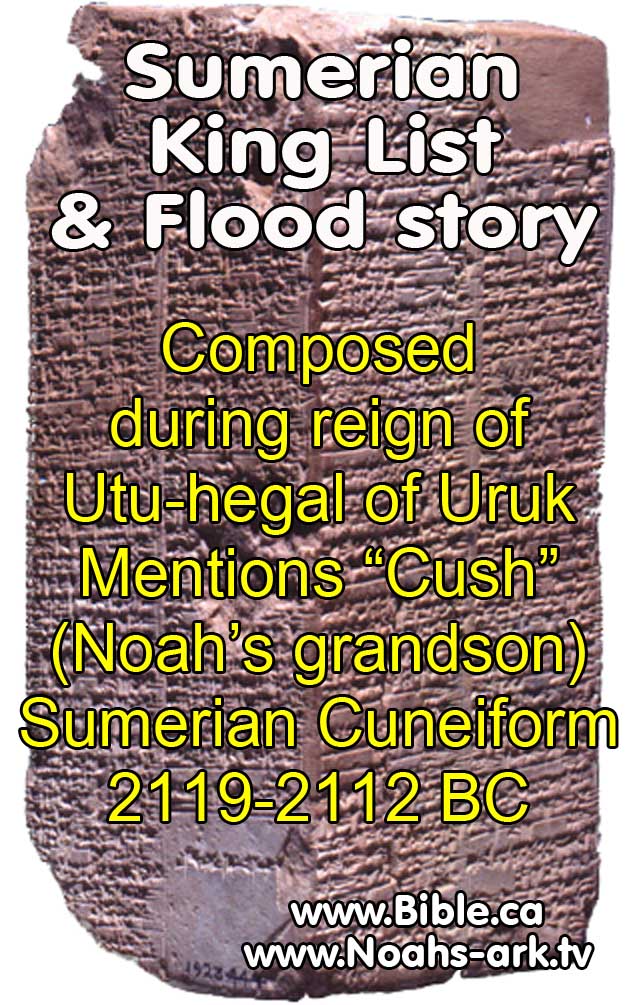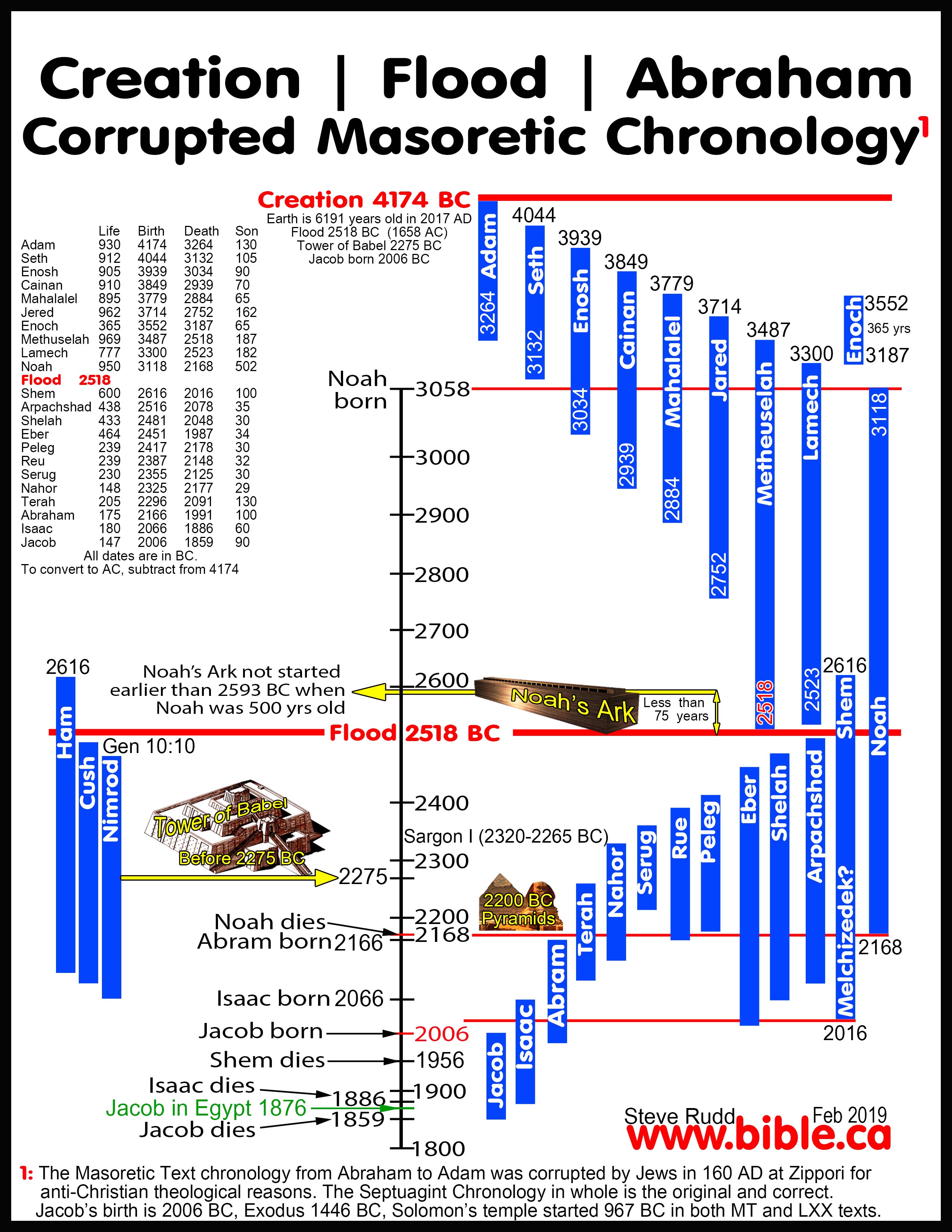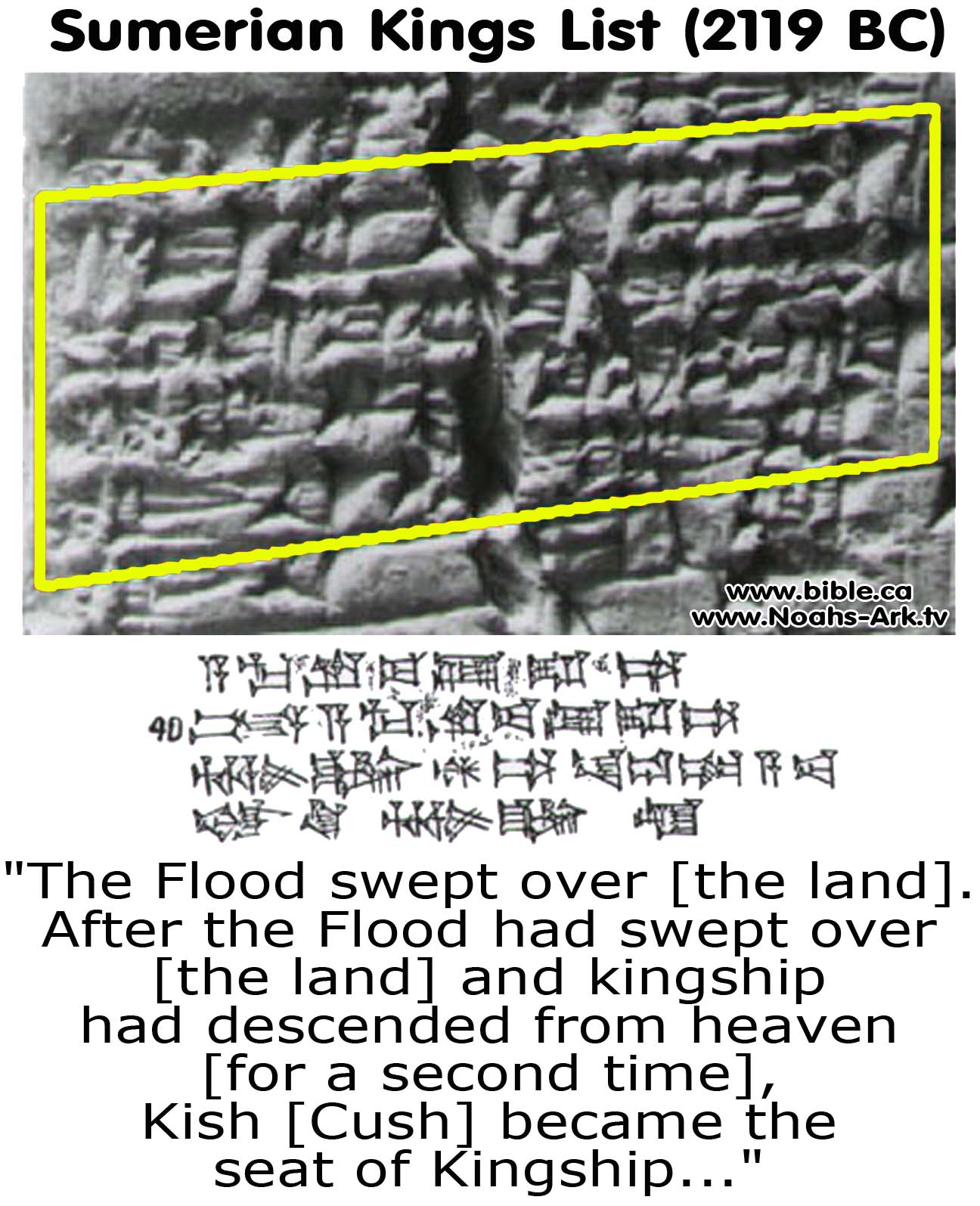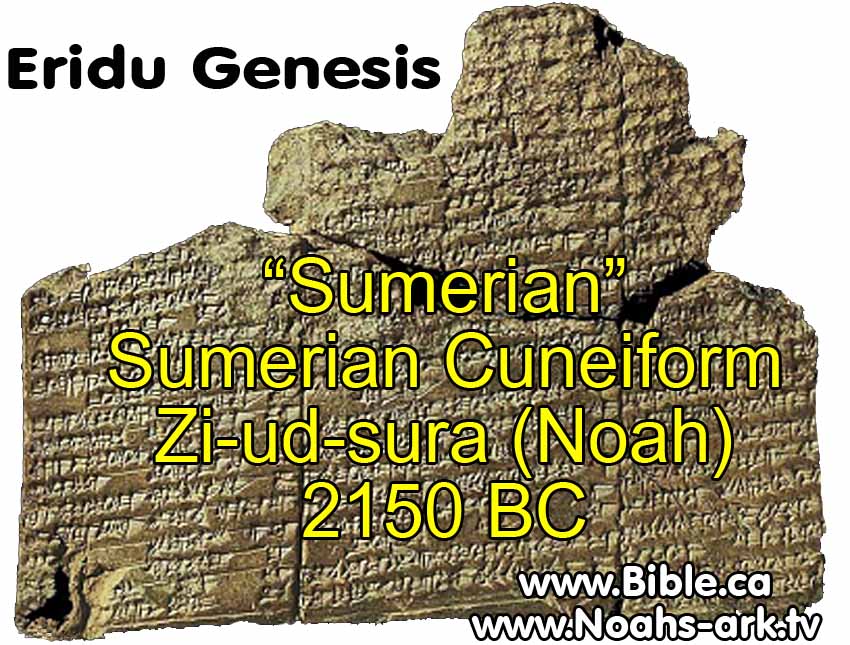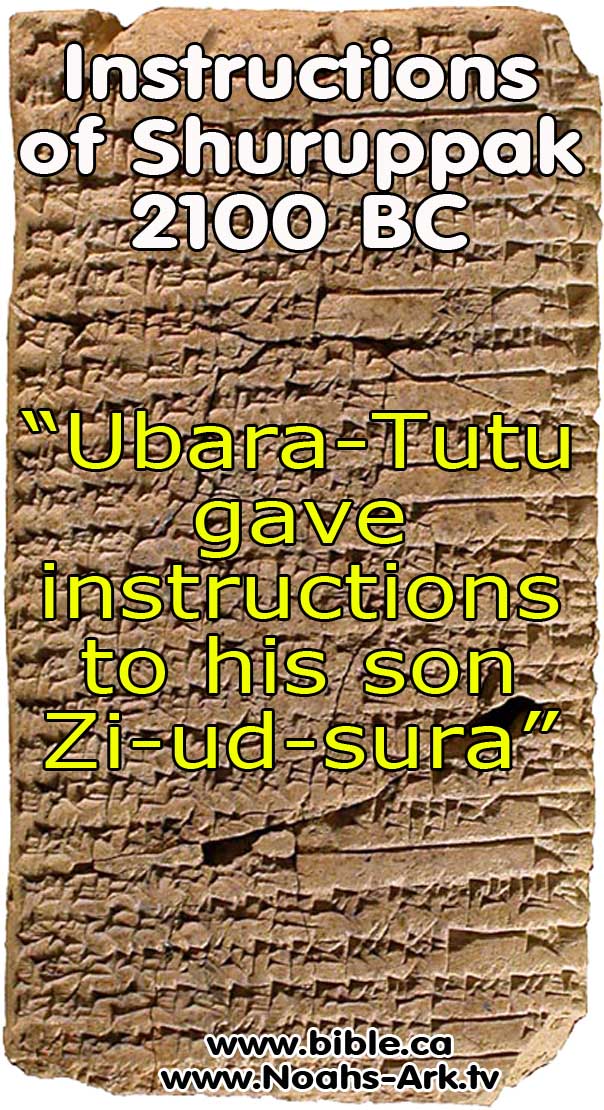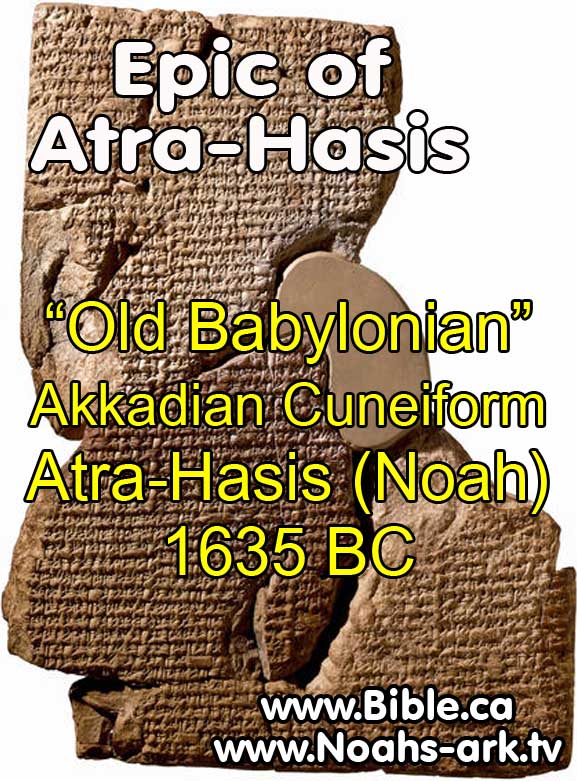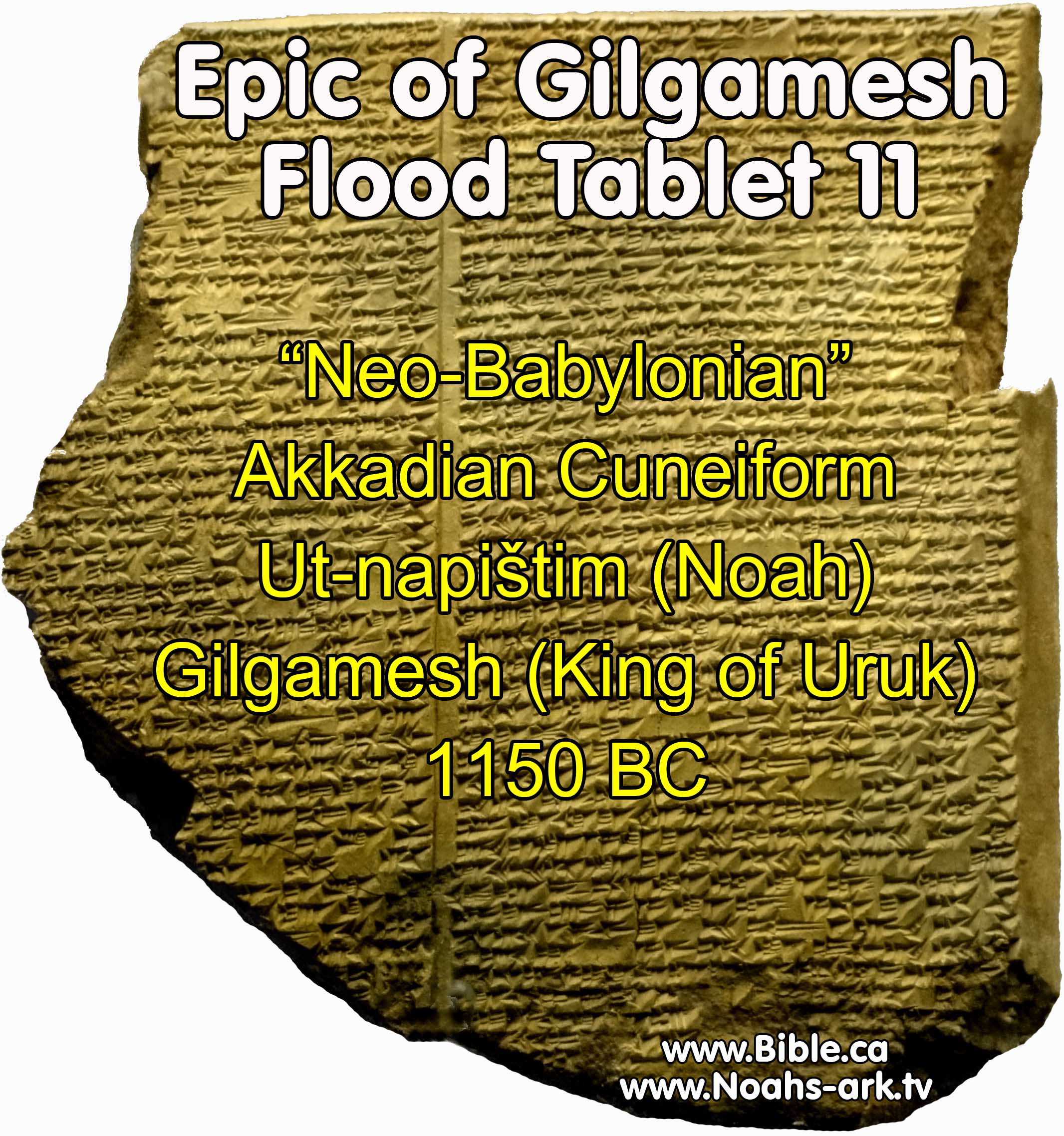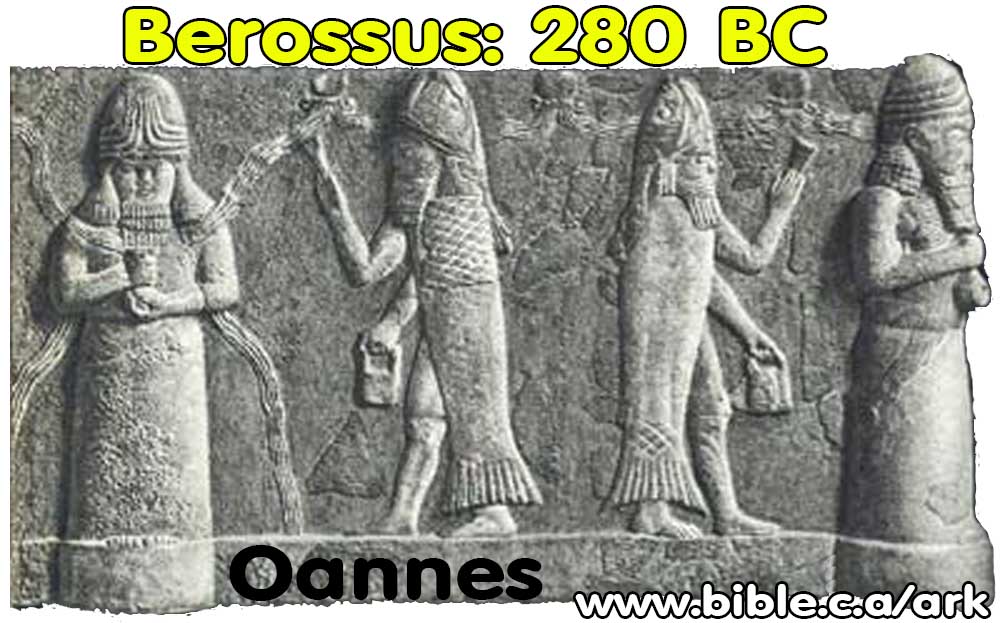The Search for Noah's Ark with Steven Rudd
|
The Sumerian Kings List: 2119 BC |
|||
|
|
The Sumerian Kings list:
|
||
|
|
|
|
|
|
|
"After the flood had swept over, and the kingship had descended from heaven, the kingship was in Kish (Cush: Noah's grandson, father of Nimrod)." (Sumerian Kings List) |
||
|
|
|
|
|
Introduction:
1. The original King List was probably composed during the reign of Utu-hegal of Uruk (2119-2112 BC) and the pre-flood list of kings, added after the reign of Sin-magir (1827-1817 BC) of the Isin dynasty.
2. The Weld-Blundell Prism (W-B 444) was excavated at Larsa, Iraq by Weld-Blundell Expedition 1922 and is located in the Ashmolean Museum in Oxford, England. It is 20 cm x 9 cm and is a four sided cube or "prism" with two columns of text and is dated from 2119 BC or older.
3. In addition to the Weld-Blundell Prism, there are at least 15 additional different copies of the Sumerian Kings list which are differentiated by Initials A, B, C etc. Later lists show evidence of an Akkadian influence.
4. The list of cities are in the same order as the Eridu Genesis flood story.
5. Although it is rare in archeology, the prism was created by a scribe who wrote his name, "Nur-Ninšubur" into the clay in cuneiform at the end of the list.
6. Although Zi-ud-sudra is the "Noah-like" character in the Sumerian flood story (2150 BC) and the Greek flood account by Berossus (280 BC), he is not mentioned in the Sumerian Kings List. His pre-flood town of Suruppak, however, is listed! "the Blundell Prism omits all reference to the well known Babylonian Noah, [Zi-ud-sudra] Ziusuddu (Sisythes), who built his boat at Suruppak and escaped destruction in this manner." (Oxford Editions Of Cuneiform Texts, The Weld-Blundell Collection Vol 2, Chronological Prism, W-B. 444, S. Langdon, 1923)
7. Lists Suruppak, which is not only the pre-flood town where Zi-ud-sudra built the ark, but also the name of Zi-ud-sudra's father in the Instructions of Shuruppak.
A. Six Significant facts about the Sumerian Kings list:
2. It mentions a both a city (Kish) and a king who was Noah's grandson "Kish" or "Cush" as living after the flood. Cush was the father of Nimrod who built the Tower of Babel. The Bible gives the genealogies: Noah, Ham, Cush, Nimrod.
3. The life span of the kings are much longer before the flood and in the normal range after the flood, as indicated in the Bible.
4. The list mentions many names of cities also listed in the Bible: Babylon, Erech [Uruk], Akkad, Calah, Nineveh
5. It mentions Gilgamesh who in The Epic of Gilgamesh was the young King of Uruk who traveled to a man who was on the Ark named "Ut-napištim". "Gilgameš, whose father was an invisible being, the lord of Kulaba, ruled for 126 years. Ur-Nungal, son of the divine Gilgameš, ruled for 30 years."
6. The Sumerian Kings list names the pre-flood town of "Suruppak", where Zi-ud-sudra built the ark to escape the flood in the Sumerian flood story and Berossus, although Zi-ud-sudra himself is not in the Sumerian Kings List.
B. Full Text section:
|
|
Sumerian Kings List: Larsa prism (version G) |
|
|
After the kingship descended from heaven, the kingship was in Eridu. In Eridu, Alulim became king; he ruled for 28,800 years. Alalgar ruled for 36,000 years. Two kings; they ruled for 64800 years. Then Eridu fell and the kingship was taken to Bad-tibira. In Bad-tibira, Enmen-lu-ana ruled for 43,200 years. Enmen-gal-ana ruled for 28,800 years. The divine Dumuzi, the shepherd, ruled for 36,000 years. Three kings; they ruled for 108,000 years. Then Bad-tibira fell and the kingship was taken to Larak. In Larak, En-sipad-zid-ana ruled for 28,800 years. One king; he ruled for 28,800 years. Then Larak fell and the kingship was taken to Sippar. In Sippar, Enmen-dur-ana became king; he ruled for 21,000 years. One king; he ruled for 21000 years. Then Sippar fell and the kingship was taken to Šuruppak. In Šuruppak, Ubara-Tutu became king; he ruled for 18,600 years. One king; he ruled for 18,600 years. Five cities; eight kings ruled for 385,200 years. Then the Flood swept over. After the Flood had swept over, and the kingship had descended from heaven, the kingship was in Kiš. [Kush or Cush] In Kiš, Gišur became king; he ruled for 1,200 years. Kullassina-bęl ruled for 900 years. Nan-GIŠ-lišma ruled for 1,200 years. En-dara-ana ruled for 420 years, 3 months, and 3˝ days. Babum ruled for 300 years. Pu'annum ruled for 840 years. Kalibum ruled for 900 years. Kalumum ruled for 840 years. Zuqaqip ruled for 900 years. Atab ruled for 600 years. Mašda, son of Atab, ruled for 840 years. Arwi'um, son of Mašda, ruled for 720 years. Etana, the shepherd, who ascended to heaven and put all countries in order, became king; he ruled for 1,500 years. Balih, son of Etana, ruled for 400 years. Enme-nuna ruled for 660 years. Melem-Kiš, son of Enme-nuna, ruled for 900 years. Barsal-nuna, son of Enme-nuna, ruled for 1,200 years. Samug, son of Barsal-nuna, ruled for 140 years. Tizkar, son of Samug, ruled for 305 years. Ilku'u ruled for 900 years. Ilta-sadum ruled for 1200 years. Enmen-baragesi, who destroyed Elam's weapons, became king; he ruled for 900 years. Agga, son of Enmen-baragesi, ruled for 625 years. Twenty-three kings ruled for 23,310 years, 3 months, and 3 1/2 days. Then Kiš was defeated and the kingship was taken to Eanna. In Eanna, Meš-ki'ag-gašer, son of Utu, became lord and king; he ruled for 324 years. Meš-ki'ag-gašer entered the sea and disappeared. Enmekar, son of Meš-ki'ag-gašer, the king of Uruk, who built Uruk, became king; he ruled for 420 years. The divine Lugal-banda, the shepherd, ruled for 1200 years. The divine Dumuzi, the fisherman, whose city was Ku'ara, ruled for 100. Gilgameš, whose father was an invisible being, the lord of Kulaba, ruled for 126 years. Ur-Nungal, son of the divine Gilgameš, ruled for 30 years. Udul-kalama, son of Ur-Nungal, ruled for 15 years. La-bašer ruled for 9 years. Ennun-dara-ana ruled for 8 years. Mešhe, the smith, ruled for 36 years. Melem-ana ruled for 6 years. Lugal-ki-GIN ruled for 36 years. Twelve kings ruled for 2310 years. Then Uruk was defeated and the kingship was taken to Ur. In Ur, Mes-ane-pada became king; he ruled for 80 years. Meš-ki'ag-Nuna, son of Mes-ane-pada, became king; he ruled for 36 year. Elulu ruled for 25 years. Balulu ruled for 36 years. (mss. L1+N1, P2+L2 have:) Four kings ruled for 177 years. Then Ur was defeated and the kingship was taken to Awan. In Awan, [...] became king; he ruled for [...] years. [...]-Lu ruled for [...] years. Kul[...] ruled for 36 years. Three kings ruled for 356 years. Then Awan was defeated and the kingship was taken to Kiš. In Kiš, Su-suda, the fuller, became king; he ruled for 200+N years. Dadase ruled for 81 years. Mamagal, the boatman, ruled for 240+N years. Kalbum, son of Mamagal, ruled for 195 years. TUG ruled for 360 years. Men-nuna ruled for 180 years. Enbi-Ištar ruled for 290 years. Lugalgu ruled for 360 years. Eight kings they ruled for 3195 years. Then Kiš was defeated and the kingship was taken to Hamazi. In Hamazi, Hataniš became king; he ruled for 360 years. One king ruled for 360 years. Then Hamazi was defeated and the kingship was taken to Uruk. In Uruk, En-šakuš-ana became king; he ruled for 60 years. Lugal-ure ruled for 120 years. Argandea ruled for 7 years. Three kings ruled for 187 years. Then Uruk was defeated and the kingship was taken to Ur. In Ur, Nanne became king; he ruled for 54+N years. Mes-ki'ag-Nanna, son of Nanne, ruled for 48 years. [...], the son of [...], ruled for 2 years. Three kings ruled for [...] years. Then Ur was defeated and the kingship was taken to Adab. In Adab, Lugal-ane-mundu became king; he ruled for 90 years. One king ruled for 90 years. Then Adab was defeated and the kingship was taken to Mari. In Mari, Anubu became king; he ruled for 30 years. Anba, son of Anubu, ruled for 17 years. Bazi, the leather worker, ruled for 30 years. Zizi, the fuller, ruled for 20 years. Lim-er, the pašišu-priest, ruled for 30 years. Šarrum-iter ruled for 9 years. Six kings ruled for 136 years. Then Mari was defeated and the kingship was taken to Kiš. In Kiš, Ku-Baba, the woman tavern-keeper, who made firm the foundations of Kiš, became king; she ruled for 100 years. One queen ruled for 100 years. Then Kiš was defeated and the kingship was taken to Akšak. In Akšak, Unzi became king; he ruled for 30 years. Undalulu ruled for 6 years. Urur ruled for 6 years. Puzur-Nirah ruled for 20 years. Išu-Il ruled for 24 years. Šu-Sin, son of Išu-Il, ruled for 7 years. Six kings ruled for 93 years. Then Akšak was defeated and the kingship was taken to Kiš. In Kiš, Puzur-Sin, son of Ku-Baba, became king; he ruled for 25 years. Ur-Zababa, son of Puzur-Sin, ruled for 400. Simudara ruled for 30 years. Usi-watar ruled for 7 years. Ištar-muti ruled for 11 years. Išme-Šamaš ruled for 11 years. Nanniya, the stonecutter, ruled for 7 years. Seven kings ruled for 491 years. Then Kiš was defeated and the kingship was taken to Uruk. In Uruk, Lugalzagesi became king; he ruled for 25 years. (2341-2316) One king ruled for 25 years. Then Uruk was defeated and the kingship was taken to Agade. In Agade, Sargon, whose father was a gardener, the cupbearer of Ur-Zababa, became king, the king of Agade, who built Agade; he ruled for 56 years. (2335-2279) Rimuš, son of Sargon, ruled for 9 years. (2279-2270) Maništušu, the older brother of Rimuš, son of Sargon, ruled for 15 years. (2270-2255) Naram-Sin, son of Maništušu, ruled for 56 years. (2255-2218) Šar-kali-šarri, son of Naram-Sin, ruled for 25 years. (2218-2193) Then who was king? Who was not king? Irgigi was king, Nanum was king, Imi was king, Elulu was king; those four kings ruled 3 years. (2193-2190) Dudu ruled for 21 years. (2190-2169) Šu-Durul, son of Dudu, ruled for 15 years. (2169-2154) Eleven kings ruled for 181 years. Then Agade was defeated and the kingship was taken to Uruk. In Uruk, Ur-nigin became king; he ruled for 7 years. (2154-2147) Ur-gigir, son of Ur-nigin, ruled for 6 years. (2147-2141) Kuda ruled for 6 years. (2141-2135) Puzur-ili ruled for 5 years. (2135-2130) Ur-Utu ruled for 6 years. (2130-2124) Five kings ruled for 30 years. Uruk was defeated and the kingship was taken to the army of Gutium. The army of Gutium, a king whose name is unknown. Nibia became king; he ruled for 3 years. Then Ingišu ruled for 6 years. Ikukum-la-qaba ruled for 6 years. Šulme ruled for 6 years. Silulumeš ruled for 6 years. Inimabakeš ruled for 5 years. Ige'a'uš ruled for 6 years. I'ar-la-qaba ruled for years. Ibate ruled for 3 years. Yarla ruled for 3 years. Kurum ruled for 1 year. Apil-kin ruled for 3 years. La'arabum ruled for 2 years. Irarum ruled for 2 years. Ibranum ruled for 1 year. Hablum ruled for 2 years. Puzur-Sin, son of Hablum, ruled for 7 years. Yarlaganda ruled for 7 years Si'u ruled for 7 years. Tiriga ruled for 40 days. Twenty-one kings ruled for 91 years and 40 days. Then the army of Gutium was defeated and the kingship was taken to Uruk. In Uruk, Utu-hegal became king; he ruled for 420 years and 7 days. One king ruled for 427 years and 6 days. Then Uruk was defeated and the kingship was taken to Ur. In Ur, Ur-Nammu became king; he ruled for 18 years. Šulgi, son of Ur-Nammu, ruled for 46 years. Amar-Sin, son of Šulgi, ruled for 9 years. Šu-Sin, son of Amar-Sin, ruled for 9 years. Ibbi-Sin, son of Šu-Sin, ruled for 24 years. Four kings ruled for 108 years. Then Ur was defeated. The kingship was taken to Isin. In Isin, Išbi-Irra became king; he ruled for 33 years. The divine Šu-ilišu, son of Išbi-Irra, ruled for 20 years. Iddin-Dagan, son of Šu-ilišu, ruled for 21 years. Išme-Dagan, son of Iddin-Dagan, ruled for 20 years. Lipit-Ištar, son of Išme-Dagan, ruled for 11 years. The divine Ur-Ninurta ruled for 28 years. Bur-Sin, son of Ur-Ninurta, ruled for 21 years. Lipit-Enlil, son of Bur-Sin, ruled for 5 years. The divine Irra-imitti ruled for 8 years. The divine Enlil-bani ruled for 24 years. The divine Zambija ruled for 3 years. The divine Iter-piša ruled for 4 years. Urdukuga ruled for 4 years. Sin-magir ruled for 11 years. Damiq-ilišu, son of Sin-magir, ruled for 23 years. Thirteen kings ruled for 213 years. Hand of Nur-Ninšubur. |
|
|
Sumerian Kings List: Nippur Tablet B |
|
|
A total of thirty-nine kings ruled for 14409+N years, 3 months and 3˝ days; four dynasties in Kiš. A total of twenty-two kings ruled for 2610+N years, 6 months and 15 days; five dynasties in Uruk. A total of twelve kings ruled for 396 years, 3 dynasties in Ur. A total of three kings ruled for 356 years; one dynasty in Awan. A total of one king ruled for 420 years; one dynasty in Hamazi. A total of one king ruled for 90 years; one dynasty in Adab. A total of six kings ruled for 136 years; one dynasty in Mari. A total of six kings ruled for 99 years; one dynasty in Akšak. A total of eleven kings ruled for 197 years; one dynasty in Agade. A total of twenty-one kings ruled for 125 years and 40 days; one dynasty in Gutium. A total of eleven kings ruled for 159 years; one dynasty in Isin. Eleven royal cities. Their total: 134 kings. Total: 28,876+N years, N months, N days. |
|
|
Sumerian Kings List: Nippur Tablet CM 2 |
|
|
(...) [...] reigned 4+N years. Ir[...]; Ur[...], son of a man whose name is not known, ruled for 8 years. Sumuabum reigned 8 months. Ikun-pi-Ištar became king; he ruled for [...] years. A total of N kings ruled for 125+n years; six dynasties of [...]a. |
|
|
|
The global flood from the oldest archeology on earth:
|
|
|
|
|
|
|
|
|
Exhibit |
||||||
|
Name |
||||||
|
Date of tablet |
2150 BC |
2119-2112 BC |
2100 BC |
1635 BC |
1150 BC |
280 BC |
|
Language |
Sumerian Cuneiform |
Sumerian Cuneiform |
Akkadian Cuniform |
Akkadian Cuneiform |
Akkadian Cuneiform |
Greek |
|
Noah figure |
Zi-ud-sura "he obtained immortality" |
Cush, Noah's grandson |
Zi-ud-sura "he obtained immortality" |
Atra-Hasis "he who is very wise" |
Ut-napištim "he obtained immortality" |
Xisuthrus "he obtained immortality" |
|
Country |
Šuruppuk |
Šuruppuk |
Šuruppuk |
Šuruppak |
Šuruppak |
Sippar |
|
Destroyer God |
Enlil |
- |
- |
Enlil |
Enlil |
Enlil |
|
Mutinous god who warned of flood |
Enki |
- |
- |
Enki |
Enki |
Enki |
|
Where tablets found |
Nippur, Iraq |
Larsa, Iraq |
Abu Salabikh Iraq |
Sippar, Iraq |
Nabu, Iraq Nineveh, Turkey |
Quoted by Josephus etc. |
|
Museum |
Pennsylvania Museum: Object B10673 |
Ashmolean Museum in Oxford, England |
Iraq Museum, Baghdad (looted 2003) |
British Museum Room 56 |
British Museum, Room 55 |
No originals. |
|
More Details |
Sumerian Kings |
By Steve Rudd
Noah’s Ark, Flood and Tower of Babel
